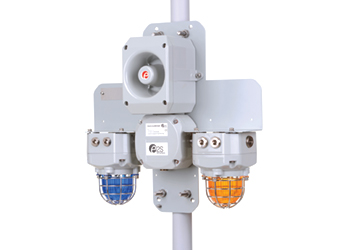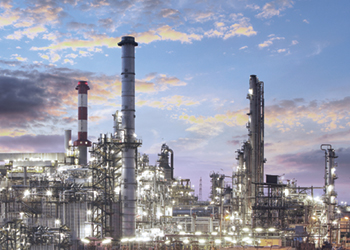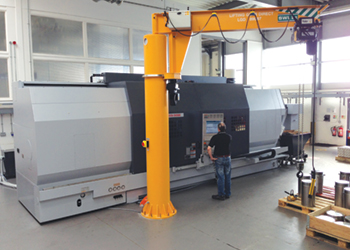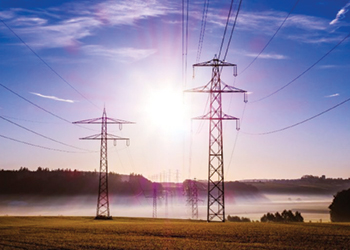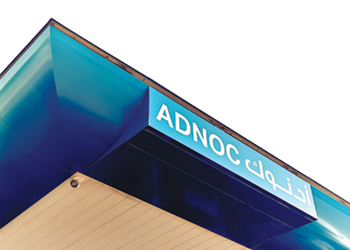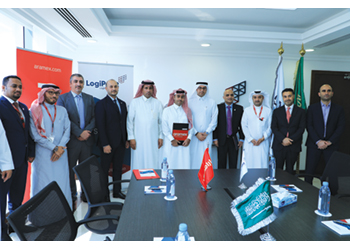
 Cross ... keynote speaker
Cross ... keynote speaker
Investment in AI, Big Data and Analytics could cut capital expenditure by 20 per cent and add $300 billion a year to offshore cash flows by 2025
Digital innovation is set to drive unprecedented era of oil and gas productivity as global energy demand continues to rise.
Adipec 2019 will bring together industry thought leaders to explore the nexus between breakthough technologies and energy
Digital transformation of the oil and gas industry in the Middle East and North Africa continues to be fast tracked, as energy companies across the region ramp up investment in technologies supporting faster and leaner exploration and production and optimisation of costs.
In the past five years the Mena region has seen a tight focus on cost reduction, as oil and gas companies have responded to changes in the energy market, with much of the industry’s research and development spend focused on technologies to enhance the efficiency of new and existing projects.
According to management consultants McKinsey, effective use of digital technologies, such as cloud, the Internet of Things (IoT), mobility, artificial intelligence (AI), virtual reality (VR), big data and analytics could cut capital expenditure by up to 20 percent. At the same time, it forecasts that total cash flows will improve by $11 per barrel across the offshore oil and gas value chain, adding $300 billion a year by 2025.
In a recent announcement made by the organisers of the Abu Dhabi International Petroleum Exhibition and Conference, Adipec, dmg events. Greg Cross, Artificial Intelligence Pioneer, Serial Entrepreneur, Co-Founder and Chief Business Officer of Soul Machines was confirmed to headline the event as a keynote speaker at Oil & Gas 4.0, the Strategic Conference at Adipec.
'Accepting change, understanding the unknown, can always be a challenge. In today’s fast-paced digital world, artificial intelligence is enhancing the business environment, helping corporations to become more efficient and connected.
'Digital Humans change how we interact with customers and can facilitate everyday assignments in a more productive and cost-effective manner. At Oil & Gas 4.0, I will be discussing how digital humans can become an integral part of the workforce, and the ethics, liability and governance behind today’s digital society.' Cross said.
Oil & Gas 4.0, the strategic conference at Adipec 2019 will feature conference sessions that will explore the nexus of technology and energy, including the links between digital transformation, people and partnerships, that are enabling change and creating the basis to build the oil and gas companies of the future. Meanwhile the Adipec exhibition will host the Adipec Digitalisation Zone, a dedicated area that will provide a platform for companies at the forefront of today’s technology trends and the industry’s journey of digital transformation.
Since its inauguration in 1984, Adipec has continued to grow, gaining worldwide recognition as the premier oil and gas industry exhibition and conference. The exhibition brings together over 2,200 international exhibiting companies across 155,000 gross square metres, with 29 country pavilions, attracting over 145,000 global attendees and 42 National and International Oil Companies. The conference hosts over 980 strategic and technical speakers across more than 160 sessions, covering the full energy value chain and attracting over 10,400 delegates.
 |
Oil refineries will struggle to introduce new sensors |
Anything that can be digitised will be: Of all the mega trends that are impacting the oil and gas industry, the wave of digital innovation sweeping across the landscape is the most challenging to address because of its unpredictability.
The oil and gas industry is being reshaped by changes in demand and new technologies. Growth in demand is shifting to the Middle East, Africa and Asian economies and away from Europe and North America. Clever technologies such as multi-stage hydraulic stimulation and horizontal drilling are unlocking trapped resources and transforming the U.S. from one of the world’s largest buyers of crude oil and gas to one of its largest sellers.
Less obvious is the wave of digital change that is sweeping over the industry.
Since anything that can be digitised will be digitised (startups and capital markets will make sure of that), it is only a matter of time before the effects of digital innovation are felt in oil and gas. What is uncertain is the degree of impact and the nature of impact.
The oil and gas industry will feel the effects of digital technology both directly in the business and indirectly through the adoption of digital technologies in other sectors. For example, as 3D printing improves as a technology, suppliers will offer high-quality 3D printed parts for oil and gas equipment, lowering costs, shortening the time to repair and accelerating the time to value for resource production.
Printing a part locally also lowers greenhouse gas emissions through a reduction in shipping costs. Applied across manufacturing globally, 3D printing could transform entire supply chains while simultaneously delivering a reduction in fuel consumption.
Different responses to digital technology may be appropriate depending on where in the value chain a company participates. A technology company selling software or SCADA systems to greenfield oil installations will need to respond more quickly to this technology than a pipeline operator that has long contracts and a captive market.
Fuel retailing as a segment has not materially changed since the arrival of payment systems at fuel pumps, but new apps that let customers arrange for fuel delivery directly to their car may render convenience stores obsolete.
Drilling companies whose rig fleets turn over every three years will be able to add smart systems—such as sensors that can monitor temperature, vibration and rotation and provide insights on the operating conditions of pumps, valves and other equipment above and below the surface, allowing maintenance to be scheduled according to condition. But oil refineries will struggle to introduce new sensors faster than the current turnaround schedule.
Regardless of competitive position in the value chain, companies will eventually face a new digitally enabled market entrant. Since wait and see is not an option, companies can harvest the hard-to-digitise profit pools in the industry, abandon the market or defend their position.
It is the integrated oil and gas companies that are in a unique position to manage digital change. The operations of these companies cover the whole oil and gas value chain, across the 'upstream,' 'midstream' and 'downstream' sectors—i.e., everything from the discovery and tapping of the crude resource to the refining and distribution of the product to consumers. By participating in many segments of the industry, these players can more readily detect the arrival of creative new digital solutions and the conditions that enable these new solutions to take hold.
With visibility of the entire chain, they have unique inside knowledge of the profitability of the whole industry, its pain points and its legacy technology. Blessed with vast holdings of data on the industry, they have a tempting new asset to harvest for insight, value and competitive advantage.
As many as 10 distinct technologies are likely to disrupt the oil and gas sector: analytics, artificial intelligence, augmented/virtual reality, mobility, robotics, cloud computing, the Internet of Things, advanced computer modeling, 3D printing and blockchain. A survey published in The National also shows that more than a third of oil and gas companies are already investing in big data analytics; nearly half of these companies are investing in the Internet of Things; and more than half of these companies are investing in mobile devices.
As one industry executive noted, 'The computer power available today has enabled processing sub-surface data in hours and days instead of months and years. This has enabled teams to make decisions based on current reservoir conditions, which saves costs'—particularly important in environments such as Oman’s Khazzan field, where hard rock makes gas difficult to tap.
Another major company has begun to drive down costs by integrating AI into its systems—looking to save an estimated $325,000 per rig by using analytics to more accurately pinpoint the locations of its drills.
And then there is blockchain. Since an oil well requires contracts governing the lease and rent of equipment—with its costs, revenues and ownership distributed across a number of counterparties—blockchain could find an ideal application.
In Alberta, Canada, the common use of distributed ledger technology and 'smart contracts' (which self-execute digitally and irreversibly) could save the oil and gas industry up to $2 billion by avoiding royalty disputes.
Digital transformation could unlock more than $1.5 trillion in new value for the global industry. The benefits include everything from increased revenue, as a result of increased production and reduced downtime, to increased capital efficiency, via improved asset use and capital reduction.
Cut production costs and overheads would result in reduced operating expenditure; reduced asset risks and improved health and safety programs would dampen down operational risks; and sharing data across integrated companies would create fresh insights and value. Peers should keep a watchful gaze on how this transformation agenda plays out.












































































